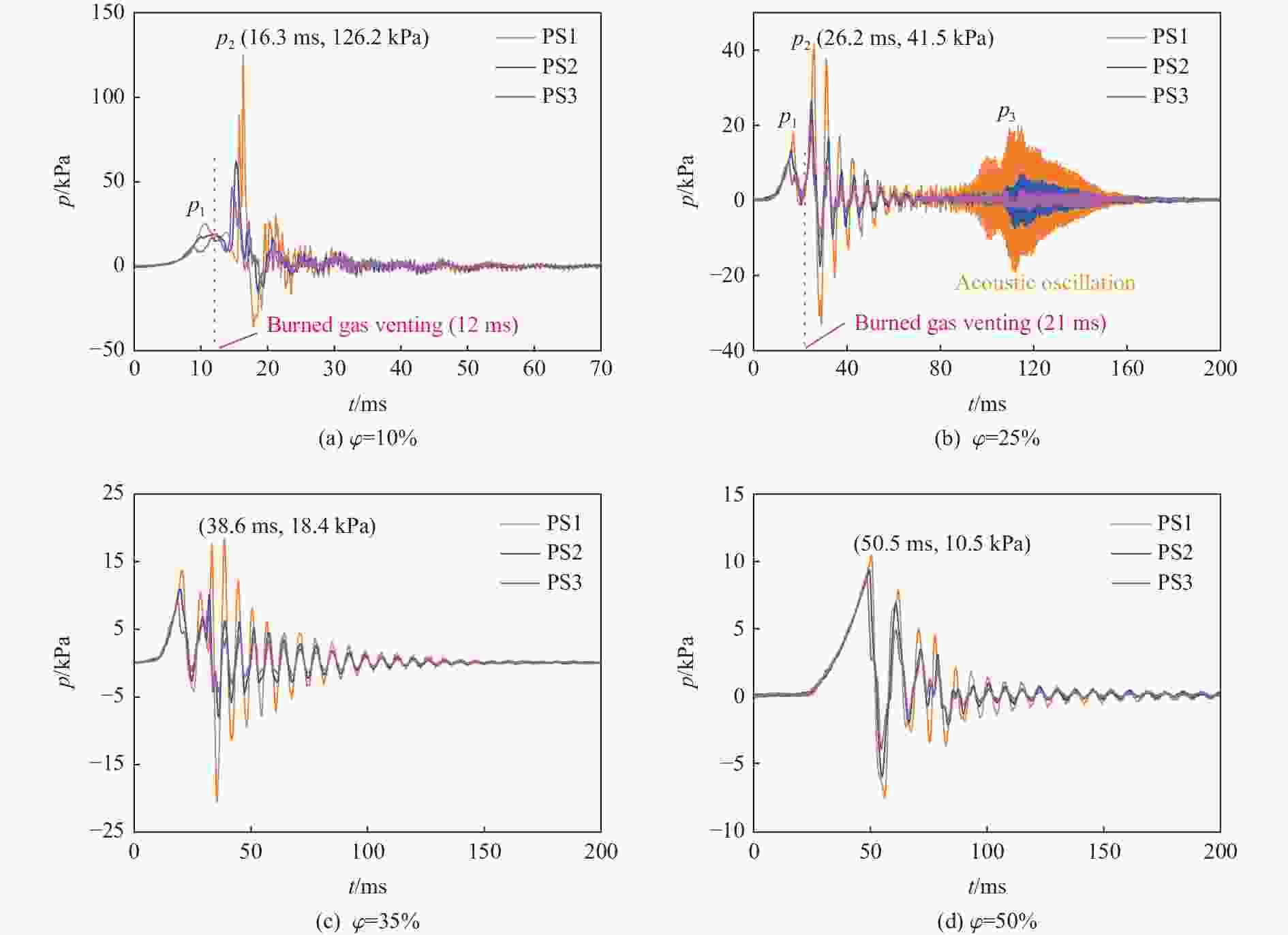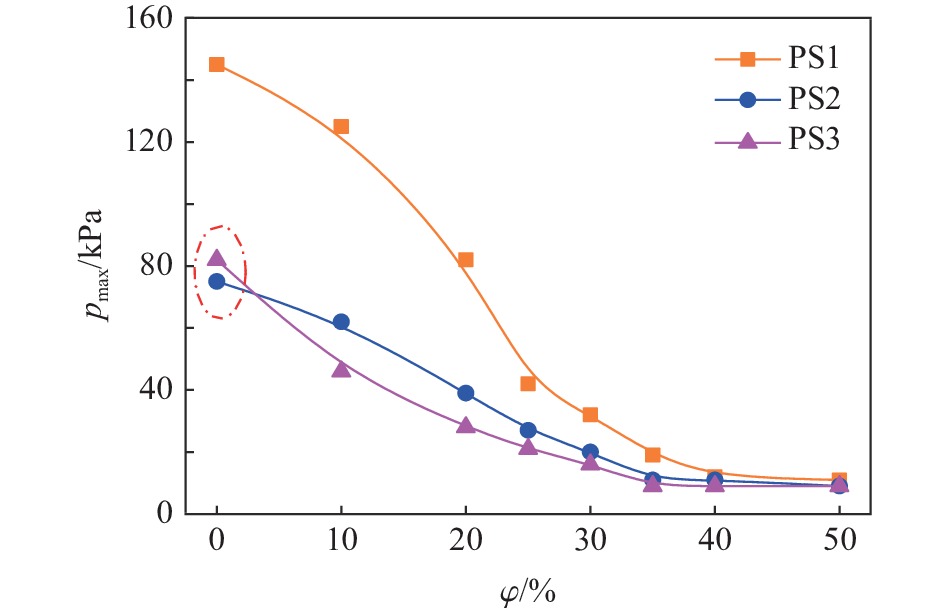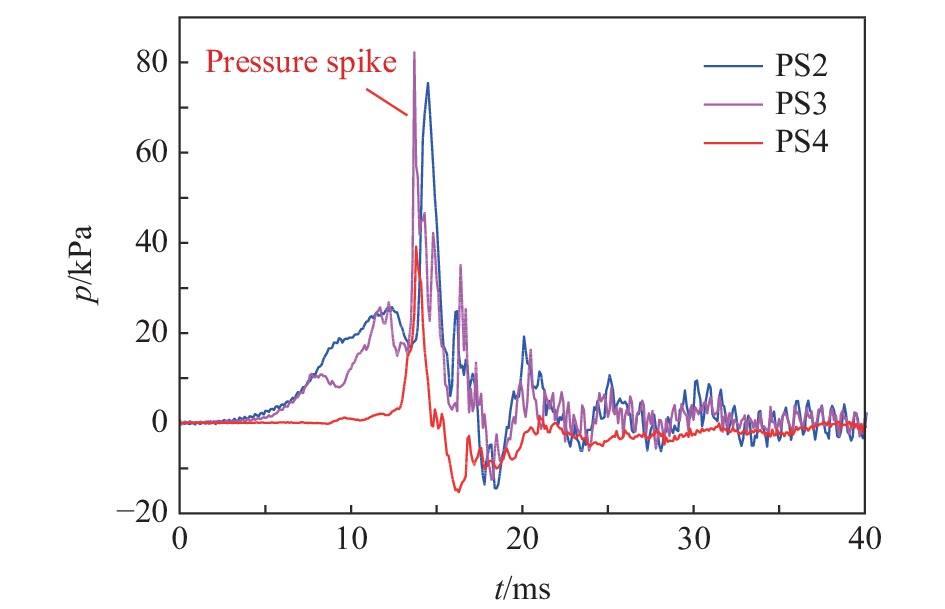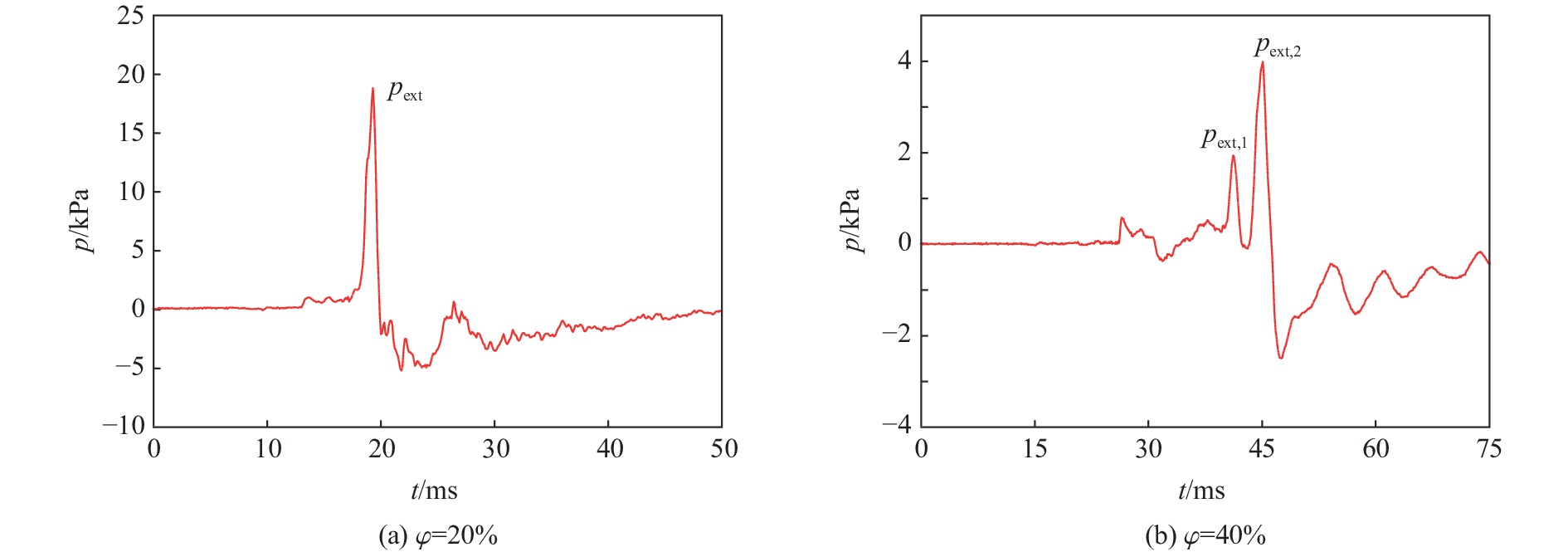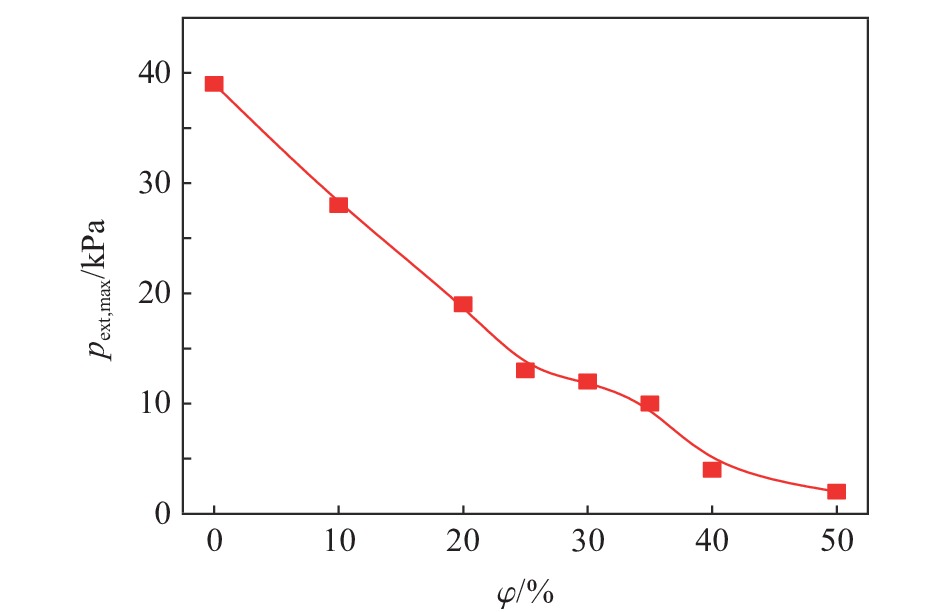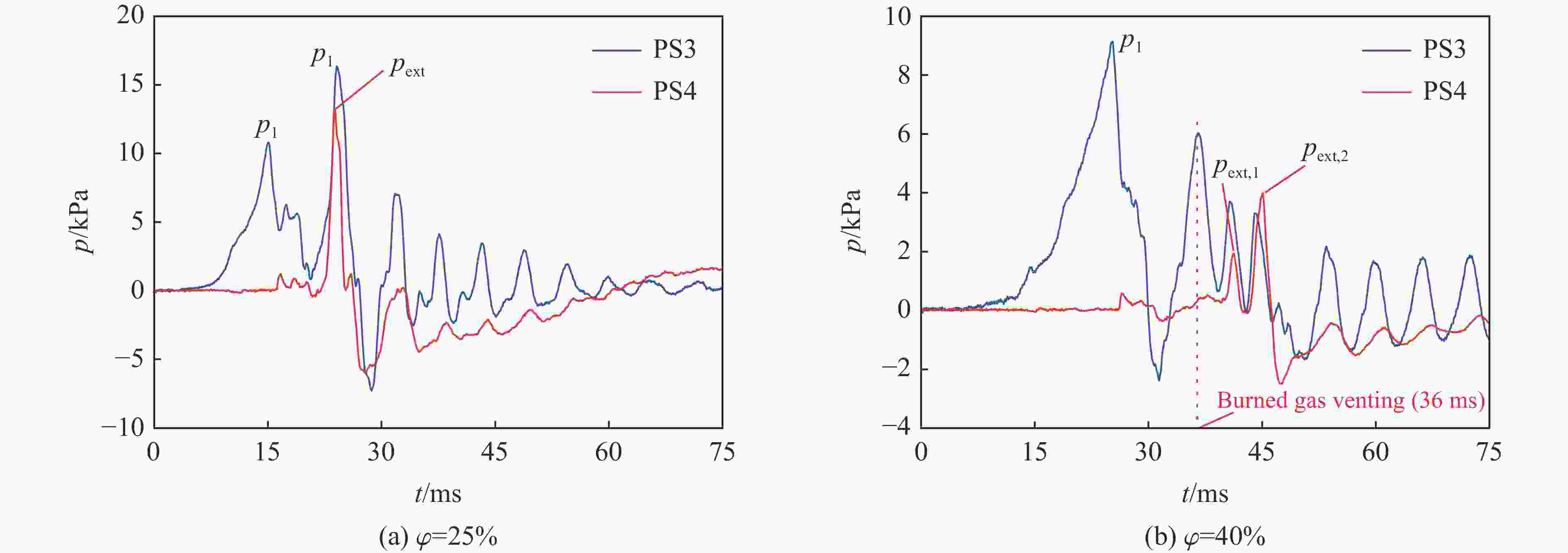| [1] |
郑远攀, 景国勋, 张亚丽. CH4/CO2混合气体爆燃特性研究进展 [J]. 爆炸与冲击, 2012, 32(2): 203–210. DOI: 10.11883/1001-1455(2012)02-0203-08.ZHENG Y P, JING G X, ZHANG Y L. A review of explosion characteristics of methane and carbon dioxide gas mixtures [J]. Explosion and Shock Waves, 2012, 32(2): 203–210. DOI: 10.11883/1001-1455(2012)02-0203-08.
|
| [2] |
崔益虎, 蒋军成, 喻源, 等. 受限空间内气体爆炸惰化泄爆实验研究 [J]. 中国矿业大学学报, 2014, 43(3): 421–425. DOI: 10.13247/j.cnki.jcumt.000127.CUI Y H, JIANG J C, YU Y, et al. Experimental study of the influence of inert gas addition on gas explosion release in confined space [J]. Journal of China University of Mining & Technology, 2014, 43(3): 421–425. DOI: 10.13247/j.cnki.jcumt.000127.
|
| [3] |
CHOW S K, CLEAVER R P, FAIRWEATHER M, et al. An experimental study of vented explosions in a 3∶ 1 aspect ratio cylindrical vessel [J]. Process Safety and Environmental Protection, 2000, 78(6): 425–433. DOI: 10.1205/095758200530970.
|
| [4] |
FERRARA G, DI BENEDETTO A, SALZANO E, et al. CFD analysis of gas explosions vented through relief pipes [J]. Journal of Hazardous Materials, 2006, 137(2): 654–665. DOI: 10.1016/j.jhazmat.2006.03.037.
|
| [5] |
BAUWENS C R, CHAFFEE J, DOROFEEV S. Effect of ignition location, vent size, and obstacles on vented explosion overpressures in propane-air mixtures [J]. Combustion Science and Technology, 2010, 182(11/12): 1915–1932. DOI: 10.1080/00102202.2010.497415.
|
| [6] |
GUO J, SUN X X, RUI S C, et al. Effect of ignition position on vented hydrogen-air explosions [J]. International Journal of Hydrogen Energy, 2015, 40(45): 15780–15788. DOI: 10.1016/j.ijhydene.2015.09.038.
|
| [7] |
曹勇, 郭进, 胡坤伦, 等. 点火位置对氢气-空气预混气体泄爆过程的影响 [J]. 爆炸与冲击, 2016, 36(6): 847–852. DOI: 10.11883/1001-1455(2016)06-0847-06.CAO Y, GUO J, HU K L, et al. Effect of ignition locations on vented explosion of premixed hydrogen-air mixtures [J]. Explosion and Shock Waves, 2016, 36(6): 847–852. DOI: 10.11883/1001-1455(2016)06-0847-06.
|
| [8] |
MCCANN D P J, THOMAS G O, EDWARDS D H. Gasdynamics of vented explosions (Ⅰ): experimental studies [J]. Combustion and Flame, 1985, 59(3): 233–250. DOI: 10.1016/0010-2180(85)90128-2.
|
| [9] |
COOPER M G, FAIRWEATHER M, TITE J P. On the mechanisms of pressure generation in vented explosions [J]. Combustion and Flame, 1986, 65(1): 1–14. DOI: 10.1016/0010-2180(86)90067-2.
|
| [10] |
JIANG X H, FAN B C, YE J F, et al. Experimental investigations on the external pressure during venting [J]. Journal of Loss Prevention in the Process Industries, 2005, 18(1): 21–26. DOI: 10.1016/j.jlp.2004.09.002.
|
| [11] |
PROUST C, LEPRETTE E. The dynamics of vented gas explosions [J]. Process Safety Progress, 2010, 29(3): 231–235. DOI: 10.1002/prs.10368.
|
| [12] |
钱海林, 王志荣, 蒋军成. N2/CO2混合气体对甲烷爆炸的影响 [J]. 爆炸与冲击, 2012, 32(4): 445–448. DOI: 10.11883/1001-1455(2012)04-0445-04.QIAN H L, WANG Z R, JIANG J C. Influence of N2/CO2 mixture on methane explosion [J]. Explosion and Shock Waves, 2012, 32(4): 445–448. DOI: 10.11883/1001-1455(2012)04-0445-04.
|
| [13] |
SHEN X B, ZHANG N N, SHI X M, et al. Experimental studies on pressure dynamics of C2H4/N2O mixtures explosion with dilution [J]. Applied Thermal Engineering, 2019, 147: 74–80. DOI: 10.1016/j.applthermaleng.2018.10.053.
|
| [14] |
WEI H Q, XU Z L, ZHOU L, et al. Effect of hydrogen-air mixture diluted with argon/nitrogen/carbon dioxide on combustion processes in confined space [J]. International Journal of Hydrogen Energy, 2018, 43(31): 14798–14805. DOI: 10.1016/j.ijhydene.2018.06.038.
|
| [15] |
ZHANG Q W, YU Y, LI Y H, et al. Coupling effects of venting and inerting on explosions in interconnected vessels [J]. Journal of Loss Prevention in the Process Industries, 2020, 65: 104132. DOI: 10.1016/j.jlp.2020.104132.
|
| [16] |
HOLBORN P G, BATTERSBY P, INGRAM J M, et al. Modelling the mitigation of lean hydrogen deflagrations in a vented cylindrical rig with water fog [J]. International Journal of Hydrogen Energy, 2012, 37(20): 15406–15422. DOI: 10.1016/j.ijhydene.2012.07.131.
|
| [17] |
HOLBORN P G, BATTERSBY P N, INGRAM J M, et al. Modelling the mitigation of a hydrogen deflagration in a nuclear waste silo ullage with water fog [J]. Process Safety and Environmental Protection, 2013, 91(6): 476–482. DOI: 10.1016/j.psep.2012.11.001.
|
| [18] |
BATTERSBY P N, AVERILL A F, INGRAM J M, et al. Suppression of hydrogen-oxygen-nitrogen explosions by fine water mist (2): mitigation of vented deflagrations [J]. International Journal of Hydrogen Energy, 2012, 37(24): 19258–19267. DOI: 10.1016/j.ijhydene.2012.10.029.
|
| [19] |
HOLBORN P G, BATTERSBY P, INGRAM J M, et al. Modelling the mitigation of hydrogen deflagrations in a vented cylindrical rig with water fog and nitrogen dilution [J]. International Journal of Hydrogen Energy, 2013, 38(8): 3471–3487. DOI: 10.1016/j.ijhydene.2012.12.134.
|
| [20] |
WEN X P, WANG M M, SU T F, et al. Suppression effects of ultrafine water mist on hydrogen/methane mixture explosion in an obstructed chamber [J]. International Journal of Hydrogen Energy, 2019, 44(60): 32332–32342. DOI: 10.1016/j.ijhydene.2019.10.110.
|
| [21] |
PEI B, YU M G, CHEN L W, et al. Experimental study on the synergistic inhibition effect of nitrogen and ultrafine water mist on gas explosion in a vented duct [J]. Journal of Loss Prevention in the Process Industries, 2016, 40: 546–553. DOI: 10.1016/j.jlp.2016.02.005.
|
| [22] |
INGRAM J M, AVERILL A F, BATTERSBY P N, et al. Suppression of hydrogen-oxygen-nitrogen explosions by fine water mist (1): burning velocity [J]. International Journal of Hydrogen Energy, 2012, 37(24): 19250–19257. DOI: 10.1016/j.ijhydene.2012.09.092.
|
| [23] |
刘洋, 李展, 方秦, 等. 惰性气体和水蒸气对长直空间燃气爆炸超压及其振荡的抑制作用 [J]. 高压物理学报, 2021, 35(5): 055201. DOI: 10.11858/gywlxb.20200654.LIU Y, LI Z, FANG Q, et al. Inert gas and water vapor suppressing overpressure and its oscillation of gas explosion in long straight space [J]. Chinese Journal of High Pressure Physics, 2021, 35(5): 055201. DOI: 10.11858/gywlxb.20200654.
|
| [24] |
张迎新, 吴强, 刘传海, 等. 惰性气体N2/CO2抑制瓦斯爆炸实验研究 [J]. 爆炸与冲击, 2017, 37(5): 906–912. DOI: 10.11883/1001-1455(2017)05-0906-07.ZHANG Y X, WU Q, LIU C H, et al. Experimental study on coal mine gas explosion suppression with inert gas N2/CO2 [J]. Explosion and Shock Waves, 2017, 37(5): 906–912. DOI: 10.11883/1001-1455(2017)05-0906-07.
|
| [25] |
LU C, WANG H B, PAN R K, et al. Preventing the propagation of gas explosion in ducts using spurted nitrogen [J]. Process Safety and Environmental Protection, 2019, 123: 11–23. DOI: 10.1016/j.psep.2018.12.028.
|
| [26] |
LI G C, WANG X S, XU H L, et al. Experimental study on explosion characteristics of ethanol gasoline-air mixture and its mitigation using heptafluoropropane [J]. Journal of Hazardous Materials, 2019, 378: 120711. DOI: 10.1016/j.jhazmat.2019.05.104.
|
| [27] |
ZHENG L G, LI G, WANG Y L, et al. Effect of blockage ratios on the characteristics of methane/air explosion suppressed by BC powder [J]. Journal of Hazardous Materials, 2018, 355: 25–33. DOI: 10.1016/j.jhazmat.2018.04.070.
|
| [28] |
郑立刚, 王亚磊, 于水军, 等. NaHCO3抑制瓦斯爆炸火焰与压力的耦合分析 [J]. 化工学报, 2018, 69(9): 4129–4136. DOI: 10.11949/j.issn.0438-1157.20180433.ZHENG L G, WANG Y L, YU S J, et al. Coupled relationship between flame and overpressure of gas explosion inhibited by NaHCO3 [J]. CIESC Journal, 2018, 69(9): 4129–4136. DOI: 10.11949/j.issn.0438-1157.20180433.
|
| [29] |
GUO J, WANG C J, LIU X Y. Experimental study on duct-vented explosion of hydrogen-air mixtures in a wide range of equivalence ratio [J]. Industrial & Engineering Chemistry Research, 2016, 55(35): 9518–9523. DOI: 10.1021/acs.iecr.6b02029.
|
| [30] |
LI J L, WANG X B, GUO J, et al. Effect of concentration and ignition position on vented methane-air explosions [J]. Journal of Loss Prevention in the Process Industries, 2020, 68: 104334. DOI: 10.1016/j.jlp.2020.104334.
|
| [31] |
SOLBERG D M, PAPPAS J A, SKRAMSTAD E. Observations of flame instabilities in large scale vented gas explosions [J]. Symposium (International) on Combustion, 1981, 18(1): 1607–1614. DOI: 10.1016/S0082-0784(81)80164-6.
|
| [32] |
LI Q Q, HU E J, CHENG Y, et al. Measurements of laminar flame speeds and flame instability analysis of 2-methyl-1-butanol-air mixtures [J]. Fuel, 2013, 112: 263–271. DOI: 10.1016/j.fuel.2013.05.039.
|
| [33] |
ZENG W, LIU J, MA H A, et al. Experimental study on the flame propagation and laminar combustion characteristics of landfill gas [J]. Energy, 2018, 158: 437–448. DOI: 10.1016/j.energy.2018.06.062.
|
| [34] |
郑立刚, 朱小超, 于水军, 等. 浓度和点火位置对氢气-空气预混气爆燃特性影响 [J]. 化工学报, 2019, 70(1): 408–416. DOI: 10.11949/j.issn.0438-1157.20180726.ZHENG L G, ZHU X C, YU S J, et al. Effect of concentration and ignition position on characteristics of premixed hydrogen-air deflagration [J]. CIESC Journal, 2019, 70(1): 408–416. DOI: 10.11949/j.issn.0438-1157.20180726.
|
| [35] |
YANG J, GUO J, WANG C H, et al. Effect of equivalence ratio on hydrogen–methane–air deflagration in a duct with an open end [J]. Fuel, 2020, 280: 118694. DOI: 10.1016/j.fuel.2020.118694.
|
| [36] |
BAO Q, FANG Q, ZHANG Y D, et al. Effects of gas concentration and venting pressure on overpressure transients during vented explosion of methane-air mixtures [J]. Fuel, 2016, 175: 40–48. DOI: 10.1016/j.fuel.2016.01.084.
|
| [37] |
ZHANG C, WEN J, SHEN X B, et al. Experimental study of hydrogen/air premixed flame propagation in a closed channel with inhibitions for safety consideration [J]. International Journal of Hydrogen Energy, 2019, 44(40): 22654–22660. DOI: 10.1016/j.ijhydene.2019.04.032.
|
| [38] |
KUZNETSOV M, FRIEDRICH A, STERN G, et al. Medium-scale experiments on vented hydrogen deflagration [J]. Journal of Loss Prevention in the Process Industries, 2015, 36: 416–428. DOI: 10.1016/j.jlp.2015.04.013.
|






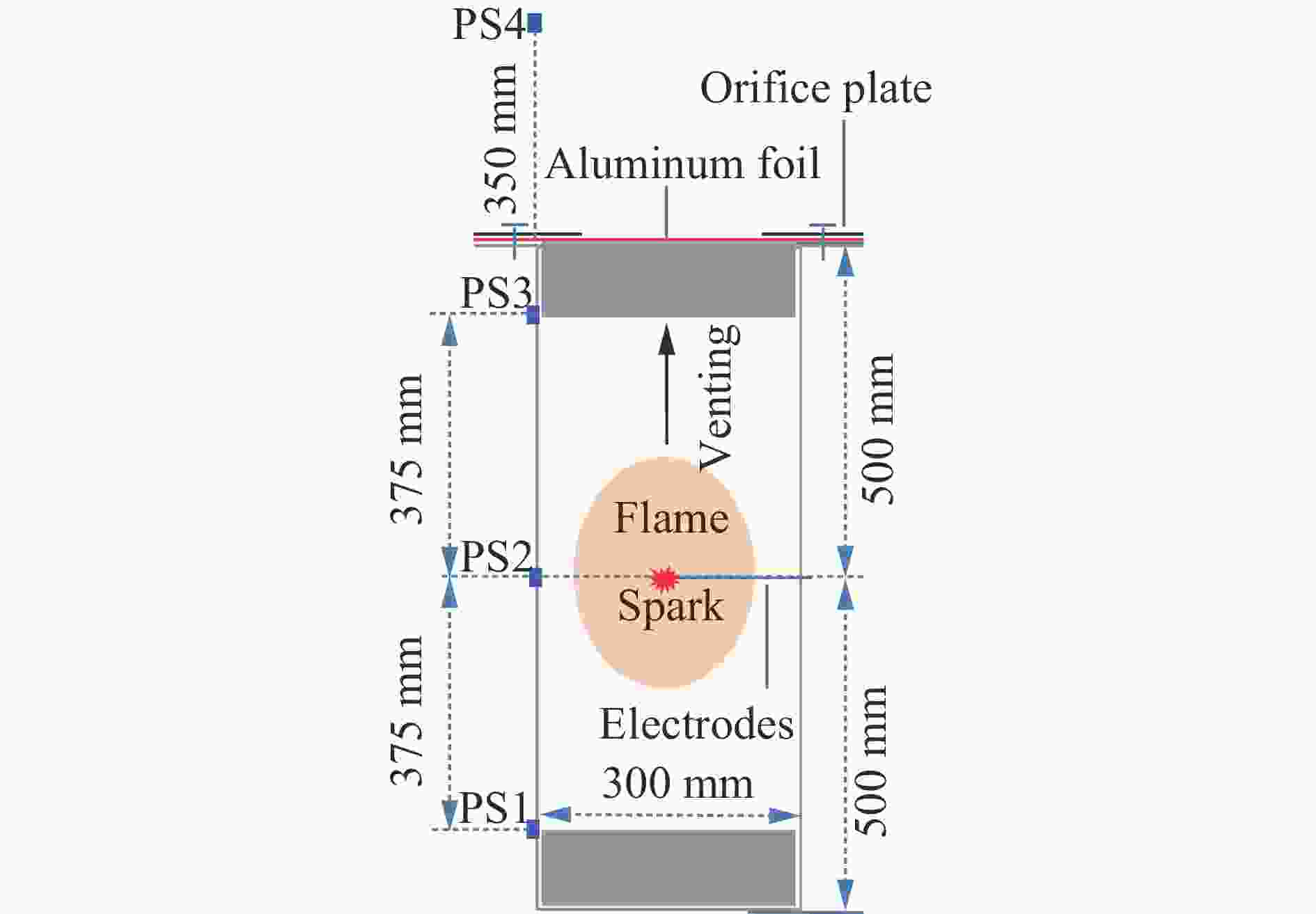
 下载:
下载:


